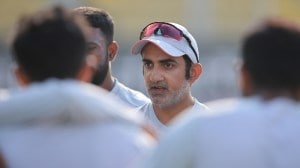Fifty,run out
The next decade could see the demise of one-day cricket. You wont miss it much.
The next decade could see the demise of one-day cricket. You wont miss it much.
It was the beginning of the millennium and dwindling crowds at the English county cricket matches had local administrators worried. Necessity,though,is the mother of invention,and the need to bring people back to the grounds led Stuart Robertson,head of marketing,England and Wales Cricket Board,to propose a livelier game: 20 overs a side,the match over in three-and-a-half-hours. That was the birth of Twenty20 cricket.
Seven years later,the first ICC World Twenty20 was held in South Africa in 2007. The idea spread like wildfire around the cricketing world and disproved the common belief that cricket,because of its inherent nature,was never going to be attractive to modern audiences. T20 came along and revealed,quite starkly,crickets major weakness. It was not so much the lack of action that the new audience failed to connect with but what the sport asked of it: time,and too much of it. People just did not have the kind of time needed to watch cricket: eight hours of a weekday to watch a 50-over match or 35 hours over five days to watch a Test match. T20 made a lot of sense in a world where time is at a premium. That is the greatest strength of T20 not the fours and the sixes,as a lot of us would like to think. As long as the world remains a busy place,T20 will remain a part of our lives.
As of now,though,we have three variants of the sport co-existing,but for how long? The next decade could hold the answer.
For me,of the three,one-day cricket is the most dispensable format. Because limitations on everything is basic to its concept,it also produces cricket and cricketers with limitations. Players who are neither exceptional batsmen nor exceptional bowlers,but in-between,bits-and-pieces cricketers. Tests and T20,on the other hand,call on cricketers with specialised skills to be involved and make a mark. As a result,there is cricketing excellence of two different kinds on view.
Nevertheless,the ICC cricket World Cup remains the flagship event of cricket. I wonder if that alone is keeping ODIs relevant. That this World Cup is being held in India is a bonus. Come what may,India will make this event a success and because of that,the world may assume that 50-over cricket is still viable. But the real test will be its appeal to cricket fans after the 2011 World Cup.
I did a statistical exercise a couple of years ago after yet another forgettable one-day series in Sri Lanka. I found that 80 per cent of the runs scored in the series were singles and twos. Imagine that! The spectators were mostly watching batsmen taking ones and twos. With the odd exception,that is more or less the scenario in a one-day series. Fielding captains are not too worried about batsmen taking singles,which also means that 80 per cent of the time,a one-day series lacks intensity and a competitive edge. No wonder so many aspects of one-day cricket had to be tweaked to make it more interesting. Seasoned marketing men also tell me that three versions of cricket do not make their job of selling the game any easier. It dilutes the market.
Meanwhile,Test cricket has been the real surprise package. We had thought that the pure,gentlemans game had no chance in the big bad world of cricket,post Twenty20. But we were wrong. Granted that the stands are mostly empty,and TRPS are not encouraging over all five days,but the number of people following a Test match on television and on the internet remains very impressive. An interesting story,with a lots of twists and turns and high drama,is being told over five days,and fans are hooked.
Thats also an opportunity for sponsors to make their money. If it is selling at the right price,there is a strong demand from multimedia companies to buy Test cricket rights. It is also turning out to be cricket for the intellectuals,who in between their busy,working lives keep in touch with what is going on.
And one-day international cricket,perhaps,because of its sheer excess,is not quite holding viewer interest as it used to. That Sony Max did not even bother to air an international cricket series it had bought rights to,tells us something. The same TV channel paid a billion dollars to buy a franchise-owned domestic cricket tournament,the IPL,and hit a jackpot.
When the time comes,there wont be too many people shedding tears over the demise of ODI cricket.
The author is a former India cricketer and commentator.
& The Last Decade
Power Play T20
In its seven-and-a-half-year existence,Twenty20 cricket has acquired fanatical fans,and a high number of equally passionate detractors. But even the worst critic would grudgingly agree that T20 is here to stay,well beyond the next decade.
Short is Sweet
Conceptualised in England and marketed beyond recognition by the Indian cricket board mainly through the glitzy Indian Premier League (IPL),the most attractive element of T20 cricket has been its unpredictable nature few matches have outright favourites to start with. T20 leagues,which have become the cynosure of domestic cricket seasons around the world,including the Twenty20 Cup in England,have seen a different winner each year (Rajasthan Royals won the inaugural edition of IPL and Deccan Chargers the following year). Except in Australia,where Victoria won the KFC Twenty20 Big Bash four out of five times.
The Turning point
Australias ruthless domination of 50-over cricket during the last decade where they remained unbeaten in two World Cups had only added to the monotony surrounding the format. International T20s,however,have seen much stiffer competition with most of the major cricketing nations (except the slightly more successful South Africans and Pakistanis) presently boasting of win percentages close to 50. The three World T20 tournaments too have seen separate winners,Indias win in the inaugural edition is considered to be the turning point in the formats still nascent history especially considering that they were the last team to make their maiden T20 appearance.
Game for More
While international T20 matches continue to fight for space in the tight cricket calendar,still dominated by Test matches and 50-over ODIs,the IPL has proved in its own glamorous way that the newest format of the game could be more profitable and better-served in a franchise format. It has hardly taken time for cricket boards around the world to accept that notion and follow suit. With time,T20 cricket will also prove to be the perfect guinea pig for administrators to carry out their various experiments both with regards to the sport and its marketability while keeping the squeaky clean whites of Test cricket untarnished.
Bharat Sundaresan


- 01
- 02
- 03
- 04
- 05





























